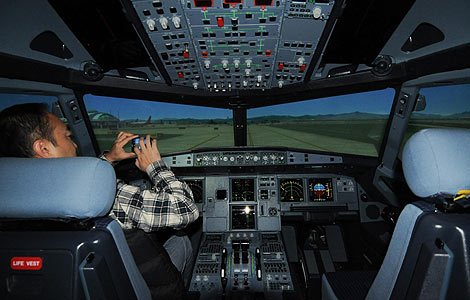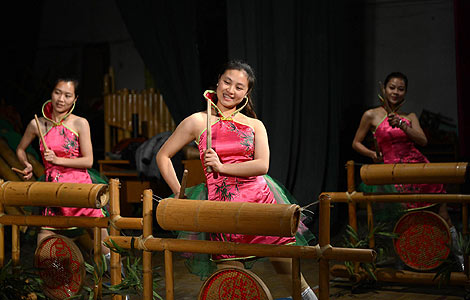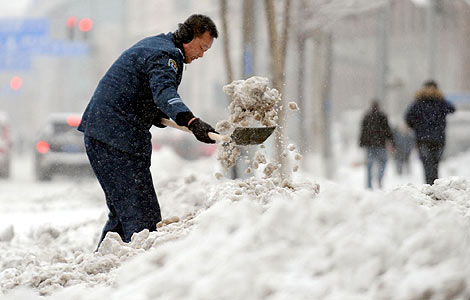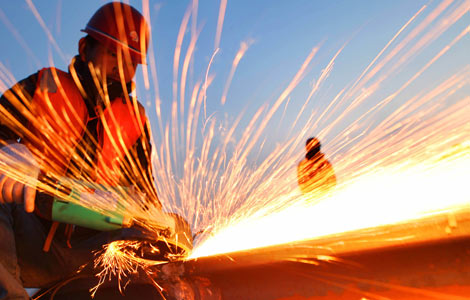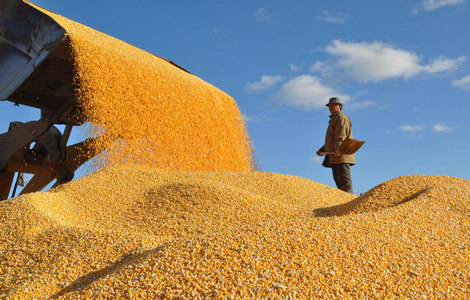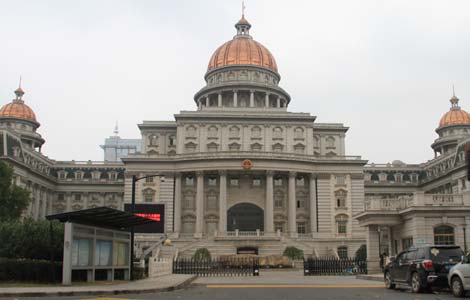
The trade imbalance between China and the United States should be attributed to US industrial structural problems and international trade transfers, rather than China and its currency policy, said Zhou Shijian, a senior trade expert and a professor at Tsinghua University.
The US should loosen its curbs on high-tech exports to China as soon as possible, and take action as it has pledged, said Zhou.
Zhou's remarks came ahead of the fourth round of the China-US Strategic and Economic Dialogue which is due to be held from Thursday to Friday in Beijing. Issues including the US trade deficit with China and China's currency policies will be discussed, said experts.
"The US has no reason to blame China (for the deficit), as it has a trade deficit with more than 90 nations worldwide and the deficit is a common, long-term and structural problem," said Zhou.
Resource-related products, labor-intensive goods and industries that the US does not enjoy strong competitiveness all contribute to the US trade deficit, he said.
In 2011, China's exports to the US rose 14.5 percent to $324.5 billion, and imports surged by 19.6 percent to $122.2 billion, leaving a trade surplus of $202.3 billion, compared with the overall US deficit of over $730 billion in 2010.
Despite the deficit, US exports to China have been expanding at an extraordinary pace during the past decade.
In 2000, US shipments to China were worth $16.25 billion, but the figure grew by more than 500 percent and shot up to $103.9 billion in 2011. But comparatively, US exports to Japan, the third-largest economy worldwide, grew by merely 1.4 percent during the same period.
"China is a big contributor to US exports," said Zhou.
Erin Ennis, vice-president of the US-China Business Council, which represents about 240 US companies doing business in China, said in March that China is vital to US economic health as it imports a lot from the US and creates jobs for US workers.
The US has repeatedly requested China to allow its currency to appreciate further and faster to narrow the deficit, but experts said the appreciation of the yuan cannot resolve the problem. While Chinese export growth slows and the ratio of the nation's trade surplus to GDP shrinks, the appreciation of the yuan will decelerate and there is not much room for the yuan to rise, said experts.
China's current account surplus has shrunk from more than 10 percent of GDP in 2007 to 2.8 percent in 2011.
Premier Wen Jiabao said in March the yuan may be near "equilibrium" and policymakers will allow greater exchange rate volatility. China has allowed yuan to weaken 0.2 percent this year against the dollar, following 2011's 4.7 percent gain in the currency.
Exports curb
According to Zhou, who is a senior researcher on China-US economic and trade issues, the US deficit with China started in the early 1990s, when the US began to tighten the screws on its high-tech exports to China.
"I have to say the right and efficient way to resolve the trade imbalance would be the if the US manages to loosen the restrictions," said Zhou. "If the country did that, there is a high possibility that the US will narrow its trade deficit with China."
Recent signals seem to show that the US aims to make some changes on the issue. But for Zhou, these are just empty words.
In late March, US Ambassador to China Gary Locke said during a function to commemorate the 40th anniversary of the Shanghai Communique that the US will allow 46 of the 141 high-tech items requested by China to enter the Chinese market, and some may not need a license. And he added that the US embassy will bring a delegation of US companies to China to meet Chinese companies interested in purchasing these goods.
But Zhou pointed out that Locke's words do not mean the US would like to make substantial efforts on the matter.
"The 46 items are comparatively low-end goods, and the high-tech goods are still not allowed to be exported to China. More than that, the US will examine them (the 46 items) case by case," he said.
dingqingfen@chinadaily.com.cn


